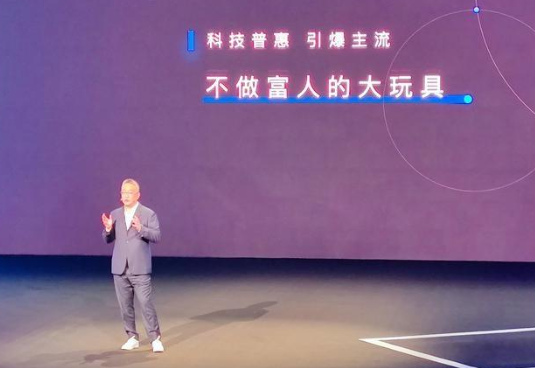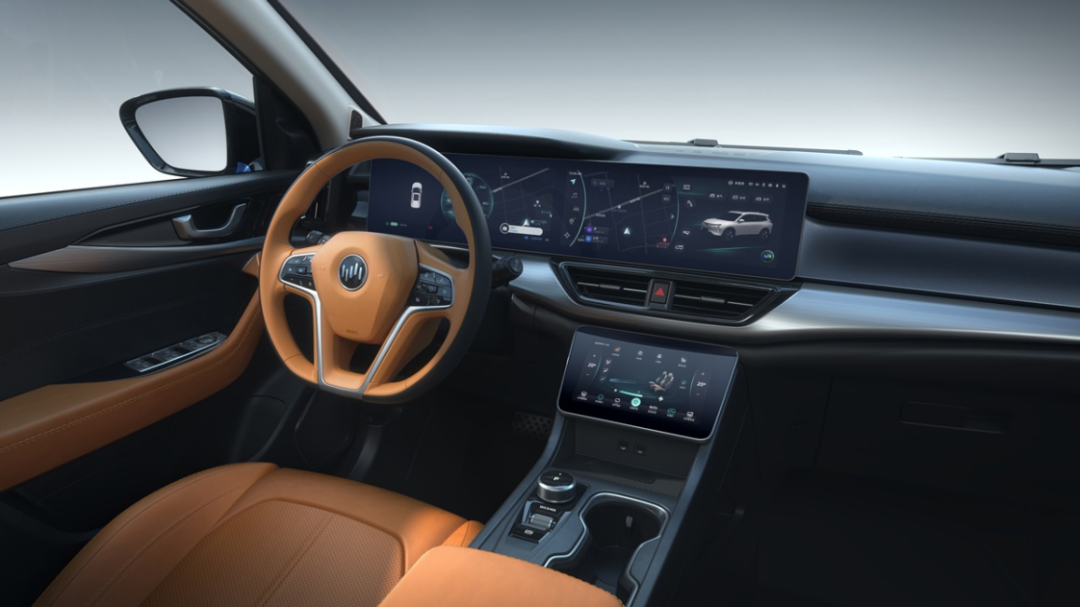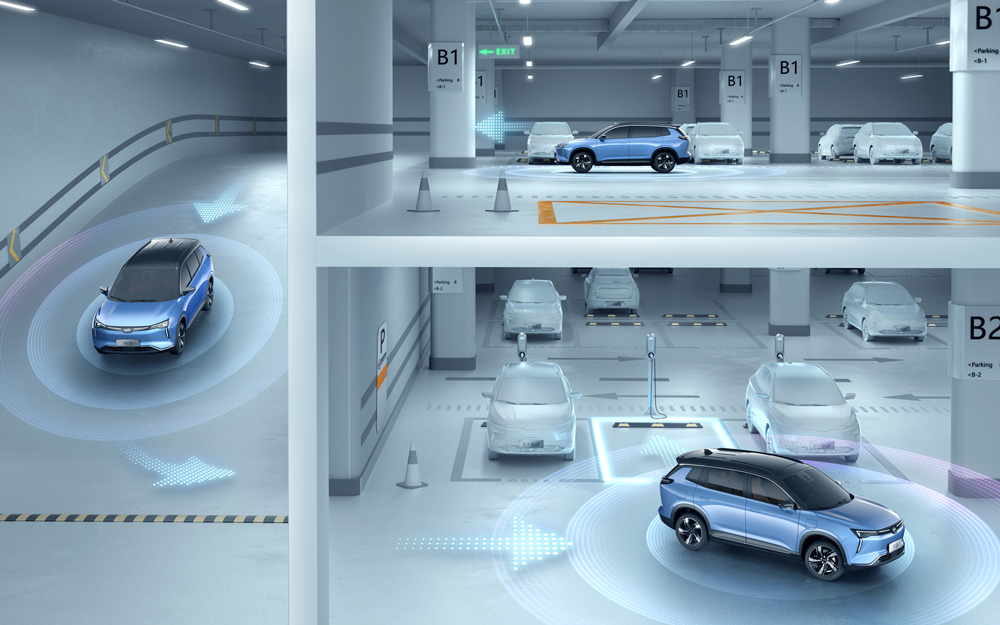*Written by Jingang Feng
Introduction
The combination of HAVP and PAVP can solve various parking pain points and create the most practical application of unmanned driving technology for users.
Recently, autonomous driving has become very popular and has gone beyond the concept stage to product implementation. Examples include the XPeng NGP 3000 km road test, Huawei’s automatic driving road test, and last night’s WmAuto W6 – China’s first intelligent electric vehicle with unmanned driving capability and mass production model priced at 200,000 yuan.

Looking at these autonomous driving technologies, there are only two paths: one is the automatic navigation-assisted driving promoted by Tesla and XPeng, and the other is the unmanned self-parking system, which Guangzhou Automobile Group E-An and WmAuto believe has more practical value. So, which one is more urgently needed by the vast majority of people?
The answer is undoubtedly the latter.
The Differences Behind the Paths
As for the advanced nature of automatic navigation-assisted driving, there is no doubt. The problem is that it is not yet so mature. Whether it is Tesla’s frequent accidents on the highway or XPeng NGP’s success rate of around 95% in various indicators, these technologies still have problems and there is still room for improvement for products known for their safety.
The reason why such a path divergence has formed is essentially related to the difference in road conditions between China and the US.
The US has mostly simple highway conditions and convenient parking at home, while China has complex and changeable highway conditions and inconvenient parking at home. As an important promoter of popularizing autonomous driving technology, Tesla, originating from the US, naturally opens up its technology based on US road conditions. As followers of the Tesla model, XPeng and NIO’s autonomous driving styles are naturally closer to the US.
Although Guangzhou Automobile Group E-An and WmAuto are also learning from Internet operation methods, their attitudes towards products and technology are more cautious. This corporate style determines a gradual application of autonomous driving technology, that is, starting from low-speed scenarios, waiting for technology and cost to become more mature, and then advancing to high-speed scenarios.
Why emphasize high and low speed? Because in low-speed situations, if the immature autonomous driving system fails or completely crashes, it will only cause minor accidents, while in high-speed situations, if there are failures, it will be a major accident, directly related to life or death.
Therefore, from the perspective of the most important safety accidents, most people currently need an intelligent driving system in low-speed working conditions, such as the WmAuto PAVP parking system, which has slightly lower risks. Of course, for those adventurous consumers, choosing a high-speed assisted driving system is also possible, but they must also be prepared for the corresponding costs.
The First L4 Mass-Produced Unmanned Driving Passenger CarOn April 16, WM Motor launched its third mass-produced vehicle, the W6, with its core selling point undoubtedly being the AVP (Automated Valet Parking) system, which falls under the classification of L4 in autonomous driving technology. From the timing perspective of being launched and delivered simultaneously, it is the world’s first mass-produced vehicle equipped with such L4 autonomous driving technology, which represents a significant milestone in the industry.
Some people have expressed doubts about the classification of W6 under L4, but they are simply poorly informed. According to SAE’s definition, L4 vehicles automatically perform all driving operations, make autonomous decisions, and drivers do not need to take any action, but this is generally limited to areas with road data that can be updated in a timely manner and high-definition GPS maps.
Therefore, W6 belongs to L4, there is no dispute about it. It should also be noted that L1-L3 are mainly in the category of intelligent assisted driving, while L4 and L5 belong to unmanned driving. In fact, if you understand the application of automatic driving technology in commercial vehicles such as Yutong, you will not doubt W6’s mass production of L4.
Now, let’s take a look at the technology. In fact, the AVP system equipped on WM W6 is divided into two types: HAVP, which is autonomous learning parking, and PAVP, which is high-precision map parking. At last year’s Baidu World Conference, WM shocked the world with a self-driving parking video, I estimate that it should be PAVP.
Firstly, about HAVP, WM said that it is suitable for fixed parking lot scenarios such as residential areas and companies. The vehicle only needs to learn once and can then park autonomously. Users can simply “call it when you need it, and it will come when you call” through the WM Intelligent Travel app, which is relatively common.
PAVP is suitable for non-fixed parking lot scenarios such as large shopping malls and office buildings. Based on high-precision maps and leveraging cloud-based million-level computing power, the vehicle can automatically plan parking routes, achieve fully unmanned autonomous parking and retrieval through cross-level cruise. This feature is currently relatively new, and compared with the launch times of other manufacturers, WM is the first in the industry.
WM emphasized that the combination of HAVP + PAVP can solve various parking pain points and create the most practical application of autonomous driving technology for users. As one of the most complex scenarios in Chinese road conditions, parking and finding a car has always been a headache for drivers. The launch of WM AVP means that this industry problem now has a practical solution.
Hardware is “Hard” Enough
Besides the well-known software and functional definitions for autonomous driving, another key aspect is hardware support. For consumers, if software is just a temporary goal, then hardware determines the upper limit of software function growth and should receive more attention.For the hardware of W6, WM has spared no expense. For example, for the most critical chip, WM has equipped W6 with the most powerful Qualcomm SA8155 chip, which enhances computing power by 8.5 times and image processing capability by 20 times. Also, it has made significant progress in 3D imaging and special effects processing.
During the launch event, the WM product manager of the post-90s generation demonstrated the power of this chip on-site. In just a few seconds, he repeatedly spoke to the voice assistant “WIMI” to open the windows, skylights, and tailgate, all of which were successfully implemented, stunning the audience.
As for sensors, WM has equipped W6 with five 77 GHz millimeter-wave radar sensors, two high-definition forward-facing cameras, four high-definition surrounding cameras, and twelve ultrasonic radar sensors to ensure the smooth operation of various driving assistant configurations. Regarding software algorithms, WM did not disclose much information.
There are also important components like the steering motor and brake system that many people may overlook. However, because they are directly in contact with the driver’s hands and feet, they play a crucial role in the feedback sensation of automatic driving. For the W6, WM has equipped it with a new generation of steering motors that can quickly respond to steering, allowing the vehicle to drive accurately on the recorded route. As for the brake system, the W6 adopts the top-of-the-line Bosch i-booster+9.3 version ESP, which has a sensitive millisecond-level control response and achieves an immediate stop braking effect.
The WM W6 has a price range of 1.698-2.598 million yuan. Some say it is expensive, but it is not. Not only does it use the best NCM battery and has an ultra-long range of up to 620 kilometers, but it also has top-level configurations such as the Qualcomm SA8155 chip and the Bosch i-booster + 9.3 version ESP, which are all current top-notch configurations for smart electric vehicles.
Why WM?
Undoubtedly, autonomous driving is the future trend, and currently, Tesla, XPeng, and Huawei are the default first-tier players, with WM ranking second. But as mentioned earlier, aside from those geeky users, the most practical autonomous driving technology that solves the problems of parking/finding a car for most Chinese people is the self-driving parking system.
I believe that Tesla and XPeng can also achieve similar technology. However, unfortunately, the first product on the market is the WM W6. From this, we can see that WM is actively seeking solutions for the intelligent experience of Chinese users. It is not just like many traditional companies standing still, but actively seeking changes. This kind of WM is respectable.
So why WM Motor? Why is WM Motor thinking about solving practical problems for Chinese road conditions and the thinking of most Chinese consumers? This can be seen from the founder and CEO Shen Hui’s sentence at the press conference. He said, “WM Motor does not make rich people’s toys.”
Indeed, whether it is Tesla, XPeng, or Huawei’s high-end autonomous driving models, they are all expensive at around 300,000 RMB or more. Even the just-listed Ji Fox Huawei version is around 400,000 RMB. Is this about making cars or playing with concepts? Must new technology be paid for by consumers?
In comparison, the WM W6 model, which is equipped with L4 autonomous driving function, is priced at only about 200,000 RMB. More importantly, the W6 is also equipped with the third-generation Living Pilot 3.0 intelligent driving assistance system, and provides 20 driving assistance configurations, including mainstream L2 functions such as stalk lane change (ALC) and automatic navigation assistance driving (NLP). Its “smart value” is highlighted.

In terms of intelligent configuration, the W6 also uses the “user-defined car” function, namely SOA technology. Simply put, common functions such as driving assistance, windows, seats, air conditioning, driving mode, music, and ambient lighting are modularized and defined in the WM App, and owners can freely arrange and define according to their preferences. According to WM, this is the first mass-produced vehicle equipped with this function in China.
Looking back at 6 years of entrepreneurship, WM Motor has had highs and lows, but overall it has been pretty good and has a place among new forces in the industry. As for the current difficulties, they are temporary and due to differences in development routes, rather than WM Motor not working hard enough. From the launch of the highly cost-effective AVP technology, WM’s efforts are visible to everyone.
This article is a translation by ChatGPT of a Chinese report from 42HOW. If you have any questions about it, please email bd@42how.com.
